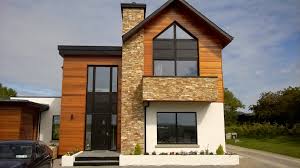What you need to know about stone cladding
Stone cladding can increase the strength and durability of the walls. When it comes to choosing cladding stone there is an endless variety. However it depends on your requirements for the project what material should be used to clad the walls.
When it comes to stone cladding you should know that it refers to attaching a heavy material to a vertical surface. Your contractor might make use of natural stone cladded on a pre constructed structure.
The most common stones used for cladding include granite, limestone or sandstone. Natural stone is a popular choice of material because it creates an instantly dramatic yet a high performance façade. Usually stone panels are installed onto the building walls using a clip system. Stone cladding serves as a rain screen façade which also comprises of an interior drainage cavity which can instantly remove any moisture which might seep into it.
Choosing the right kind of stone cladding
There are a number of natural stones which make for excellent cladding material. This can be divided into three major groups comprising of sedimentary rocks, limestone and sandstone. Metamorphic stones like marble and ingenious rocks like granite.
When choosing the stone your contractor would consider a number of factors. These would be the appearance of the stone as well as how they are going to be used. The size of the project would also have an impact on choosing the stone for cladding the walls.
The aesthetic value of the stone plays an important part as well. There is a whole lot of variation in the colors of naturally occurring stone. If you are looking for something which is dark grey then basalt would be a typical choice. On the other hand if you are looking for soft hues of off white or light pink, you may want to make use of Jerusalem stone. Sandstone on the other hand has a rustic appeal and is usually found in shades of tan and dark brown. If there is a particular look that appeals to you may want to consider talking with your contractor. They may help you decide on a stone which would be suitable for your project.
There is also variation in the pattern and the veining in the stones. You can even have a stone customize for your project but it is best to talk to a manufacturer to get an idea regarding the options which might be available for you.
There is the difference in the texture of the stones as well. While some are fragmented, others are completely smooth. Some people may prefer a polished finish which can actually help bring out the contrast in the natural colors of the stone. Honed finish is somewhat smoother and has a consistent surface usually found in granite or marble.
It is important to consider the sustainability of the stone which is being used for cladding. It is necessary to consider the environmental impact as well as the durability of the stone.









Follow Us